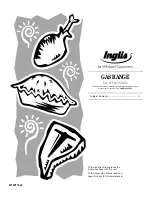
11
Before Setting Surface Controls
Benefits of Induction Surface Cooking
Fast and efficient - The induction cooking zones heat faster
while using less energy. Induction power levels are quick to boil
and efficient when simmering.
A cooler cooktop - A unique feature of the induction cooking
zones is whether turned on or off, the cooking zones remain
cooler than radiant type elements. Virtually no wasted heat is
produced because the heat begins with the presence of
cookware.
Easy cleanups - The cooler cooking zones make cleanup easier.
Spills resist sticking or burning, so they wipe up easily.
Magnetic detector - The cooking zone has a sensor that auto-
matically detects whether or not cookware is magnetic. This will
reduce accidental turn-ons.
Pan size detection - The pan size recognition sensor automati-
cally detects and adapts the induction cooking zones to the pan
sizes in use for consistent, more even cooking.
More responsive - The induction cooking zones are more respon-
sive than their electric or gas counterparts because the pan is
what heats. This type of cooking heats easier and will be just as
responsive when reducing to a simmer.
About the Induction Cooktop
The cooktop is equipped with four differently-sized induction
cooking zones and a radiant heat warm zone.
Induction cooking heats the pan directly, and heating will only
begin when cookware is properly placed on the cooking zones.
Induction Cookware
Important note:
Before using the induction cooking zones, be sure to carefully
read and follow these cookware recommendations and the
instructions in the
section.
Induction cooktops allow the flexibility to use a wide range of
cookware. Induction cooking only requires the cookware to be
magnetic. Induction-specific cookware may be purchased.
The cooking zones will not activate if the cookware is not
constructed with a base magnetic material. To check if the
cookware base material is suitable, use a magnet to test
(
). If a magnet sticks to the bottom of the cookware, the
material type is correct.
For best results, only use high quality heavy gauge cookware on
the induction cooking zones. Follow all the manufacturer’s
recommendations when using cookware made for induction
cooking.
Induction Cookware Types
The most common induction cookware types available are:
Stainless steel - Generally, excellent for induction cooking. Is
durable, easy to clean, and resists staining. Not all stainless steel
cookware is magnetic. Check before purchase or use.
Cast iron - Good for induction cooking. Cooks evenly. Do not
slide cast iron cookware on cooktop. Cast iron cookware with a
rough bottom will scratch a ceramic cooktop
Porcelain-enameled metal - Heating characteristics vary
depending on quality of base material. Porcelain-enamel
coating must be smooth to avoid scratching ceramic cooktop.
Test with a magnet before purchase or use.
Figure 3: Induction cooking zones
Figure 4: Cookware verification
Содержание 970C4250
Страница 44: ...424712 10 20 08 SR Printed in the U S A 02488 ...












































